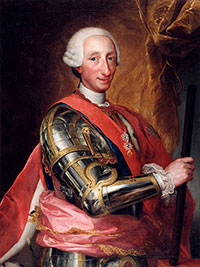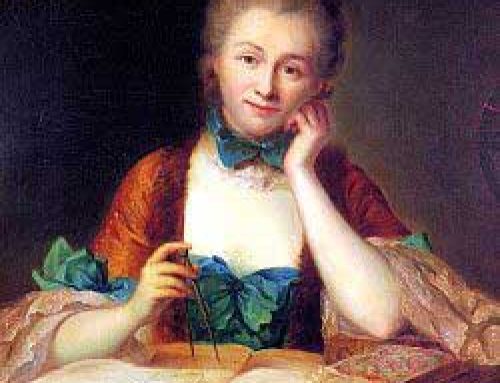
Barbara of Portugal, Queen of Spain
Elizabeth Farnese kept power in Spain until the death of her husband Philip in 1746 AD, but when Philip died power passed from Elizabeth to her step-son Ferdinand VI’s wife Barbara. Ferdinand and Barbara stayed neutral between France and Britain. They refused to get involved. Like the advisers of Louis XV at the same time in France, Barbara and Ferdinand tried to reform and modernize the government. Barbara died in 1758, and Ferdinand died the next year.

Charles III of Spain
Barbara and Ferdinand had no children, so the next King of Spain was Ferdinand’s younger half-brother, Charles III – one of Elizabeth’s sons. So Elizabeth got into power again for the last eight years of her life. Charles III continued to try to modernize Spain by throwing the Jesuits out of his empire and weakening the Catholic Church, promoting science and universities, allowing some freedom of the press, and modernizing farming and trade and the roads. He created a modern flag and a national anthem. He lost Florida to Britain in 1763, and he began to seize land from the Californian Natives with Franciscan missions and big private ranches.

Maria Luisa (Goya, 1800 AD)
Elizabeth died in 1766. The next year, Charles threw the Jesuits out of Paraguay. Because he hated Britain, Charles then supported the American colonies in the American Revolutionary War in 1776. Charles died in 1788, and power passed to Maria Luisa, the wife of Charles’ son Charles IV (and a granddaughter of Louis XV).
Maria Luisa and her adviser Godoy went back and forth between England’s side and France’s side during Napoleon‘s wars in the early 1800s. But in 1808, Napoleon forced all three of them out of power and invaded Spain himself, putting his own brother Joseph Bonaparte in power. Chile reacted by declaring independence from Spain.
When Napoleon’s empire collapsed in 1812, Charles IV’s son Ferdinand II came to power in Spain. But he didn’t get to come back as an all-powerful king. Instead, he had to cooperate with other powerful Spanish families, and rule according to the law.
In England, the kings had lost power in 1649; in America, they overthrew the king in 1776. France’s revolution came in 1789. Spain did not have a revolution, but even so by 1812 the king was forced to share power with the rich families of Spain.
